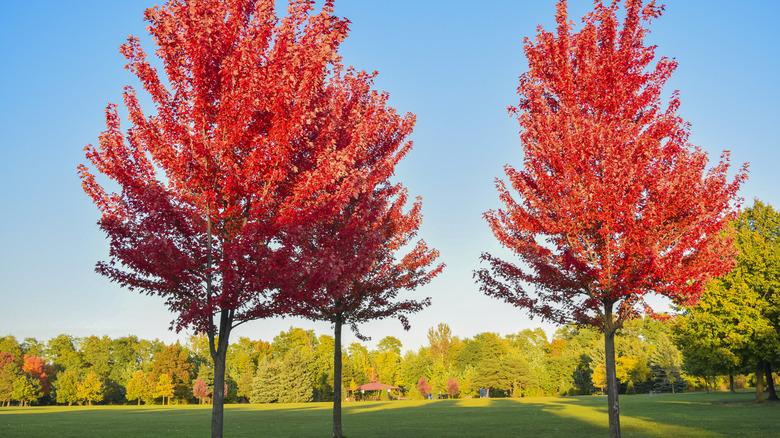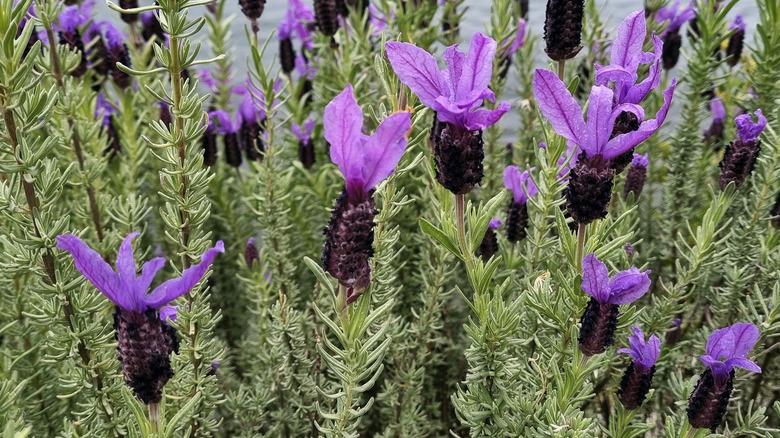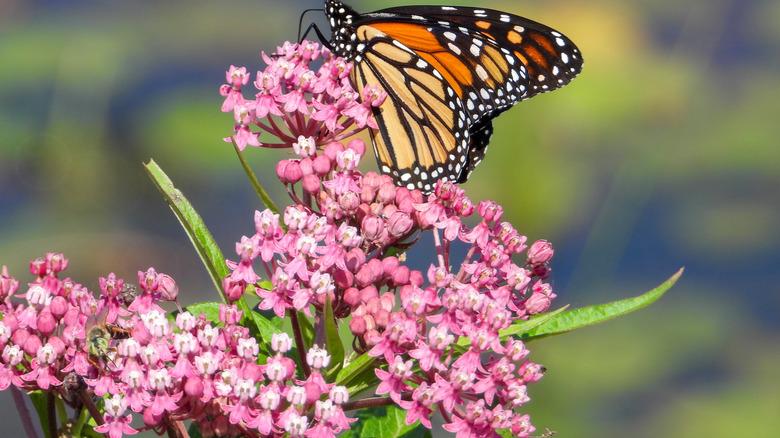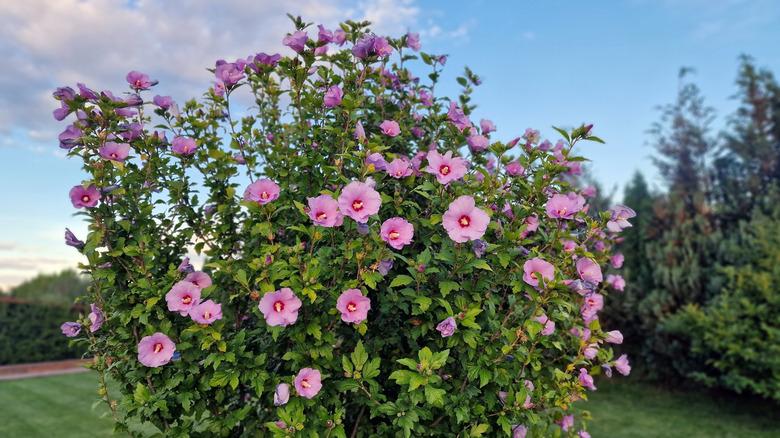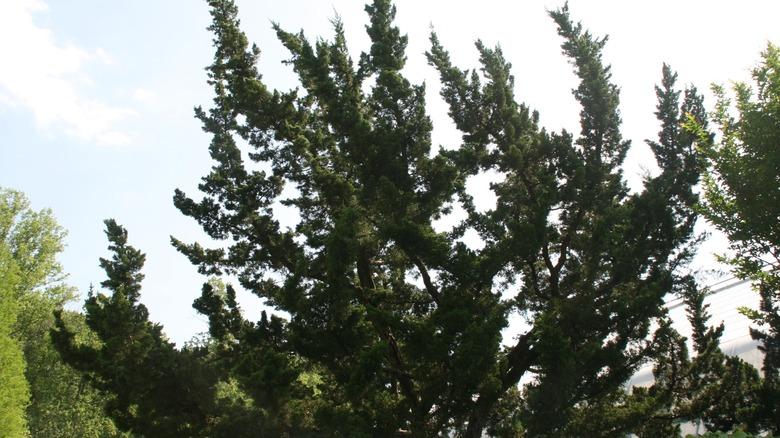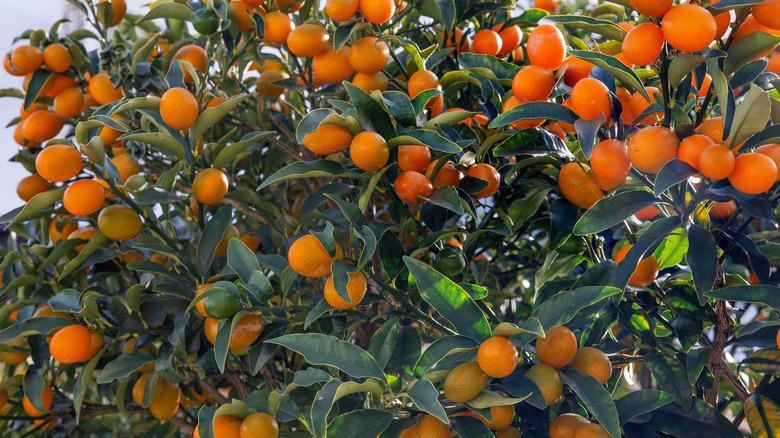Gardening In Zone 8: Here Are The 13 Best Plants And Trees To Grow
If you've ever taken a look at the planting instructions for your seedlings, flowers, or seeds, you would've notice that each plant has a designated United States Department of Agriculture (USDA) Hardiness Zone indicated on it. For beginner gardeners wondering what a USDA Hardiness Zone even is, it refers to regions of the U.S. that exhibit similar weather conditions in which certain plants can be "hardy," with hardiness referring to the plant's ability to survive such weather. The USDA provides downloadable zone maps that gardeners can utilize to determine which zone they're in, but remember it's not a static thing — your hardiness zone can change based on changing weather patterns. Keep in mind that the lower the zone number, the colder the winter.
Zone 8 characterizes areas in the U.S. that experience mild winters, with overall temperatures never reaching extreme lows nor incredible highs. It includes regions like the Pacific Northwest, parts of California, the Southeast, and parts of the Southwestern United States; it's a Goldilocks hardiness zone of sorts, where many different plants will grow since warm weather plants will rarely experience untimely bouts of frost and cold weather plants won't bolt under the heat. Certain plants prosper in this hardiness zone, including Brussel sprouts, beans, maples, and even a variety of citrus (more on that later), since they love Zone 8's plentiful moisture, humidity, and temperate weather. Though this list isn't exhaustive by any means, it does represent a wide sampling of the different vegetables, fruits, flowers, and trees that typically flourishes in this zone, so that you can plan your best Zone 8 garden yet!
Yarrow
Yarrow (Achilla millefolium) is a fern-like perennial that grows incredibly well in Zone 8 given the plant's preference for well-drained loamy soil and warmer weather. Like the Goldilocks region that's neither too hot nor too cold, yarrow is much the same, preferring balanced environments including not too dry, but not too wet conditions. This easy-to-grow herbaceous plant can get almost four feet tall with the potential for a foot-wide spread, and as an added bonus, it's a deer deterrent, while also attracting pollinators. Expect sprays of delicate blooms that range in color from cream to pink throughout the summer.
Beans
There many different varieties and cultivars of beans, including different bush beans and pole beans, and while their care may differ slightly based on these distinctions, overall, beans flourish in Zone 8. Beans need temperate weather to grow (frost is their enemy), and prefer soil that's at least 55 degrees F, making Zone 8's moderate weather ideal for these plants. Which bean you should choose, therefore, is determined by growing space. Bush beans, for instance, are more compact growers that thrive in smaller spaces, while pole beans are vining plants that can reach heights of up to six feet.
Red Maple Tree
The first tree on our list, the Red Maple (Acer rubrum) is native to the eastern seaboard of North America, but is hardy in many different regions encompassing Zones 3 to 9. What makes it particularly perfect for Zone 8 though is its versatility – it can tolerate the zone's seasonal transitions extremely well, moving from gray winters to humid summers without skipping a bit. It's a rather fast-growing tree too, able to grow up to two feet per year in well-drained soil and partial to full sun. At maturity, this tree can get up to 100 feet tall.
Common Peony
A spring and summertime favorite, peonies (Paeonia) is hardy in a number of growing conditions found throughout Zones three to nine, however certain varieties prefer the moderate environments found in Zone 8, specifically. The common peony (Paeonia officinalis) is one such variety, preferring temperate Zones 8 to 10. Native to southern Europe with its equally mild weather, common peonies prefer full sun to part shade and moist soil. They can grow up to two feet tall, exhibiting some shrub-like qualities, but what they lack in size they make up for in blossoms and fragrance in late spring.
Brussels Sprouts
A notoriously difficult vegetable to grow, Brussels sprouts are suited to grow in Zone 8 since the veggie loves consistently cooler temperatures, and even benefits from a bit of frost. For a Zone 8 summer schedule, start seeds indoors in early April, transplant by mid-summer, and expect harvest into the mid-fall. For a sweeter winter crop, start seeds towards the end of summer to plant after the first frost. Maintain a steady fertilizing schedule, keep the soil drained, and the plant well-fed, and you'll have a delicious veggie to roast come fall or spring, dependent on your planting schedule.
Bald Cypress
Native to the southern wetlands, Bald Cypress (Taxodium distichum) is well accustomed to Zone 8's growing conditions. A deciduous tree, the Bald Cypress prefers full sun to part shade as well as acidic, sandy, and moist soils. It's also a rot resistant tree, ideal for areas of the zone that can get extremely humid and waterlogged. Unlike the Red Maple, the Bald Cypress is easy for fall maintenance, cleaning up relatively easily. With that said, prepare for this tree to loom large — it can grow up to 70 feet tall and reach diameters of 30 feet wide.
Spanish Lavender
While many varieties are hardy in Zones 5 to 9, Zone 8 is one of the only environments that Spanish lavender (Lavandula stoechas) grows well in. Spanish lavender is unique from other varieties in that it fares better in humid summers (think areas of the southern U.S. that fall into Zone 8). It's also not a fan of winter and needs to be covered against the cold, hence its limited hardiness zones. Growing Spanish lavender can be simple, though. It necessitates full sun (at least six hours per day), prefers well-drained sandy soil, and doesn't require too much water.
Dahlia
Dahlias (Dahlia) have a very narrow zone range, only hardy in Zones 8 to 11 so take full advantage in Zone 8. These flowers are stunning summer bloomers that love warm weather (but, of course, not too hot in true Goldilocks fashion) and can grow up to four feet in height with consistent daytime temperatures above 60 degrees F. In Zone 8, you can leave dahlias in the ground as you enter the colder months to overwinter, but if frost is prevalent in your area, be sure to lift them after the first frost and store them for planting next year.
Milkweed
Common milkweed (Asclepias syriaca) is a versatile plant that thrives in Zone 3 to 9, but hits a sweet spot in temperate Zone 8. It optimally grows in a 75 degrees F to 78 degrees F temperature zone and loves well drained, moist soils. This plant is famous for its ability to attract pollinators and is the only host plant for monarch butterflies. Just be sure not to plant tropical milkweed, an invasive plant that will wreak havoc on your yard and garden. This variety isn't native and is known to disrupt monarch migratory patterns to the point of low butterfly survival.
Hibiscus
While we may be more familiar with tropical hibiscus flowers that grow in spots like Hawaii, there's a number of Hardy Hibiscus varieties that absolutely thrive in Zone 8. The Rose of Sharon (Hibiscus syriacus), for example, tolerates extremely low temperatures and is known to go dormant during times of harsh weather and come back in full force in the spring. Furthermore, the variety is drought and heat tolerant too, making up for any number of Zone 8 summer conditions. Expect Hardy Hibiscus plants, like Rose of Sharon, to grow up to 12 feet tall and 10 feet wide.
Hollywood Juniper Tree
The Hollywood Juniper (Juniperus chinensis 'Torulosa') is a vibrant, needled-leaved evergreen that's considered native to many different continents and popular in seaside regions like California. It is both salt- and heat-tolerant and grows well in areas with dry or poor soil. This tree's versatility and hardiness makes it a chameleon throughout Zone 8, ready for swings in humidity, light frosts, and occasional increases in temperature. It's even erosion- and air pollution-tolerant, too. In fact, it can be hardy in zones as cold as Zone 5 up to Zone 9and can grow up to 15 feet tall and 10 feet wide.
Kumquat
While citrus is often associated with consistently warm locales, there are several varieties of semi-hardy citrus that will survive a mild winter to produce fruit in temperate summers. Kumquats (Citrus japonica) are among citrus plants that can succeed well in Zone 8. Hardy up to Zone 10, kumquat plants are among the most cold-tolerant of citrus, though they will still need protection from frost if you're in a chillier Zone 8 region. A small, self-pollinating, shrub-like plant that grows from eight to 15 feet, its summertime blooms are fragrant and its petite fruits are tangy. Otherwise, it's a wonderful ornamental evergreen.
Lilac
Zone 8 is as warm as you can get with lilacs (Syringa vulgaris), the fragrant, woody, but delicate flowering tree that thrives in colder climates. In excessive heat, the plant experiences extreme wilting, and in some cases, it can suffer from bacterial blights that turn the leaves black. With that said, if you're in an area of Zone 8 that experiences unseasonably warm temperatures from time to time, be cognizant of what that does to the plant. Otherwise, if cared for well with consistent pruning, well-drained soil, and good circulation, lilacs are the most stunning addition to Zone 8 yards.



